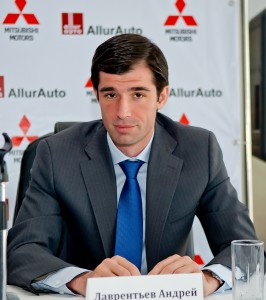ASTANA – The Kazakh automobile market was traditionally distinguished by high prices for used cars. At the same time, official car dealers in Russia provided a wide range of brands and models at lower prices. Moreover, the dealers negotiated large discounts and presents, especially for cars produced in 2013.
Everything changed Jan. 1, when the treaty creating the Eurasian Economic Union (EAEU) among Kazakhstan, Russia, Belarus and Armenia went into effect. The people in Kazakhstan have now gained full access to the Russian automobile market.
This situation was affected by the currency difference between the tenge and the ruble and opportunities for Kazakh customers increased up to 70 percent.
As a result, 36,527 cars were purchased in Russia from Oct. 1 to Dec. 31 of last year by Kazakh citizens, according to the Administrative Police Committee of the Ministry of Internal Affairs.
Andrey Lavrentyev, president and chairman of the board of AllurGroup, a local car producer, indicated Kazakhstan automobile producers ended 2014 with good results. “First of all, 37,157 passenger cars and 2,567 lorries were produced in 2014, which is almost equal to the result of 2013 in spite of tenge and ruble devaluation. Our group of companies increased the rate of production 18 percent in comparison to 2013. In 2014 we signed a contract with Geely, the major Chinese car manufacturer. This is a very serious and large project which will be developed. In particular, we plan to install welding and painting equipment,” Lavrentyev said at a press conference held by the Kazakhstan Automobile Business Association on Jan. 26.
He continued: “The current economic situation is a period of time which has to be used to our advantage to increase qualifications of employees, attract new partners and investors for the development of automobile, commercial and agricultural equipment and increase local production of automobile parts. It is a very important time for new project construction, installation of production lines and expansion and qualitative improvement of the manufacturing process. That is, it is time for thorough preparation for dynamic development in terms of the EAEU.”
“All of this is possible only if the government supports automobile producers. We don’t ask for support for existence. We need it for strategic development and preparation for operation in terms of the EAEU,” he said. “As of today, automobile dealers in Kazakhstan decrease the cost of cars and hold negotiations with Russian distributors about lowering prices. Now you can buy a car with a 30 percent discount. Dealers and distributors allow such discounts at their own expense.”
“Different measures, such as subsidy assistance and leasing transactions for physical and legal bodies, are considered to support automobile producers, taking into account opportunities of the state budget,” he continued.
“The Kazakhstan automotive industry has a good chance to enter the EAEU market. First, the market is free. There are no limitations to export models produced in Kazakhstan. Kazakhstan plants produce popular and competitive cars and commercial carriers: SsangYong Nomad, Iveco, Hyundai and Geely. All these automobiles are very interesting for EAEU member countries. Second, development of automobile parts production will increase local production of the parts. This is real production of automobile parts in Kazakhstan, which can reach a rate of 50 percent. A high level of local production increases the chances of unhindered export on the terms of the EAEU. Don’t forget about production opportunities. Kazakhstan plants can produce up to 190,000 cars annually.”
“Automobile producers shouldn’t wait for the end of the crisis. They should attract new partners and improve production, logistic, infrastructure and financial processes,” Lavrentyev concluded.
Nurlan Smagulov, chairman of the board of the Kazakhstan Automobile Business Association and president of Astana Motors, also said at the Jan. 26 press conference: “The situation in the Kazakhstan automobile market is governed by current macroeconomic trends. Kazakhstan’s automobile industry is developing. More than ten brands of automobiles are produced in our country and the rate of local production of automobile parts is constantly increasing.”
“Our company signed a contract on the production of Hyundai lorries and buses. The Hyundai County bus is welded and painted at our plant. In August 2014, the first Hyundai cars were produced in Kostanay city on the grounds of the SaryarkaAvtoProm plant, which demonstrates the trust of international producers in Kazakhstan market potential. In 2015, we plan to increase the quantity of Hyundai models. We are considering the possibility of cooperation with Chinese producers to give a choice in quality-price ratio for our clients in hard years. The Kazakhstan automobile market has all the opportunities for further development,” he said.
Supported by the Kazakh government, domestic automobile manufacturers are going to compete in the EAEU market. Kazakhstan consumers have received new opportunities to purchase a wide range of new and used cars at lower prices.


